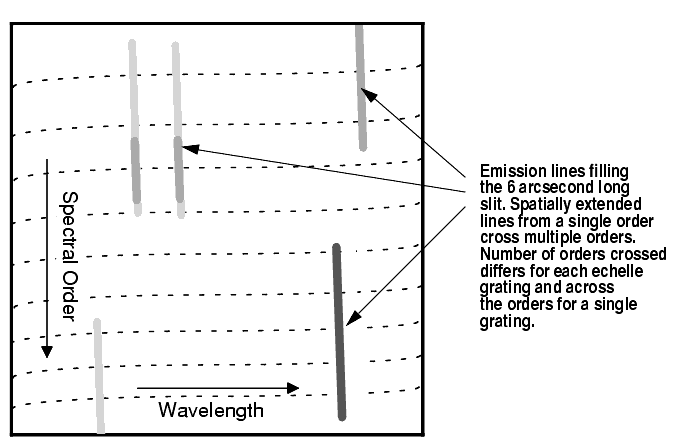



The STIS echelle gratings (see Section 4.3.1) were designed to maximize the spectral range covered in a single echellogram. The orders are therefore closely spaced and to avoid overlap between orders, short echelle slits must be used. Indeed, the majority of STIS echelle observations are of point sources and use these customized echelle slits (see Section 4.3.2). Nevertheless, at the price of confusion due to order overlap, the echelle gratings can be used with a long slit to obtain high-resolution spectroscopy of extended objects, or they can be used slitless with a full clear, filtered, or ND aperture. An example of a scientific application that would benefit from long-slit echelle spectroscopy might be observations designed to map the kinematics of planetary nebulae and stellar outflows around young stars. Observers contemplating such observations should be aware that the problems of order overlap, scattered light, and the broad wings of the PSF from the Optical Telescope Assembly will make accurate calibration and line-profile work extremely complex for extended sources with a continuum (see Section 13.7).
The 6X0.2 slit (6 arcseconds in the spatial direction and 0.2 arcseconds wide in the dispersion direction) is supported for use with all four of the echelle gratings. However, because there will be ambiguous overlap of wavelengths in the resulting echellogram, the STIS STScI pipeline will not calibrate echelle data that use the long echelle slit. The pipeline will produce an uncalibrated FITS image and the user will be responsible for calibrating the data, since, due to the ambiguous mapping of wavelength to pixel, the reduction of long-slit echelle data is an inherently source-dependent and interactive process. Observers are encouraged to weigh this archival impact against the added scientific value of using a long slit.



|
Space Telescope Science Institute http://www.stsci.edu Voice: (410) 338-1082 help@stsci.edu |